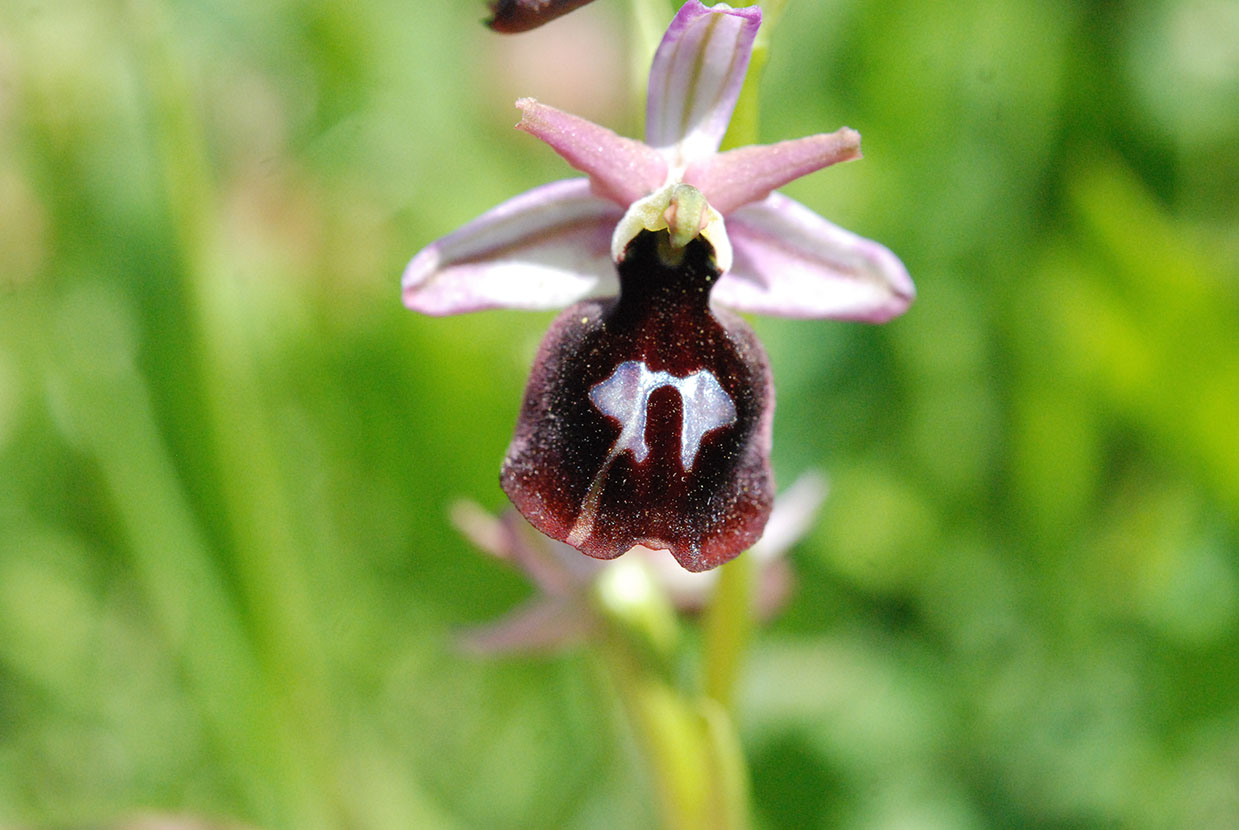Orchids are monocotyledons under the angiosperm family of Orchidaceae.
They are striking spring flowers found in a vast array of colours, shapes and patterns. They have leaves with parallel veins. Their flowers consist of an outer whorl which has three sepals and an inner whorl which has three petals. The medial petal is on the lower part of the flower forming a “lip”. Usually, the shape, colour and spots help us define the species of the orchid. This “lip” usually looks a lot like certain types of hymenoptera. Male insects are misled and come into contact with the “false” female trying unsuccessfully to fertilise it. When they realise their mistake, they proceed to flirt with another orchid believing that it is a real female. Through this remarkable process of co-evolution, the complex pollination of some of them is achieved.
Many biologists, botanists, photographers and nature lovers have found fascinating this biological singularity of this flower, combined with the flower’s obvious ability to adapt in order to look like an insect. These flowers are little visual treasures that usually go unnoticed by those not versed in botany but deserve a second and third look.
Orchid in mythology
As for the origin of the flower’s name, in Greek mythology, Orchis was the son of a nymph and a satyr. During a celebratory feast for Bacchus, Orchis committed the sacrilege of attempting to rape a priestess. His punishment was to be torn apart by wild beasts and then to be turned into a delicate and humble plant. Theophrastus was the first of the ancient writers to mention orchids. It was he who first applied the name Orchis scientifically, echoing the myth of Orchis and reflecting on the resemblance of the double root tubers to the male genitalia (in Greek “orchis”=testicle).
The ancient Greeks thought they could command the sex of their unborn children by eating Orchid roots. If the father ate large, new tubers, the child would be male; if the mother ate small tubers, the child would be female.
Following ancient Greek beliefs, both in byzantine times up till now, many in the Hellenic world attribute aphrodisiac qualities in the plants whose roots have two tubers in the shape of male testicles.
Almost everywhere in Greece, these plants are called “sernikovotana” (male-herbs). In some islands they are called “eros” because it is believed that they boost sexual desire.
Orchids are truly ubiquitous in Corfiot ecosystems, from Mount Pantokrator at the northeast to Arkoudilas forest at the South.
So far, 54 differed species and sub-species of wild orchids have been recorded in Corfu.
Find more:
ΨΗΦΙΑΚΟ ΜΟΥΣΕΙΟ ΦΥΣΙΚΗΣ ΙΣΤΟΡΙΑΣ ΚΕΡΚΥΡΑΣ
eMUSEUM OF NATURAL HISTORY OF CORFU
eMUSEO DI STORIA NATURALE DI CORFU








Discussion